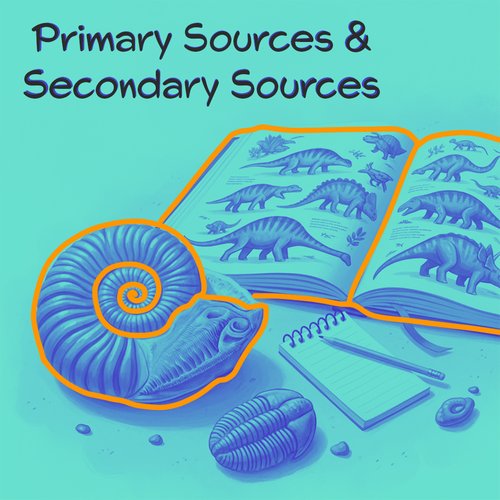
Primary or secondary? Your students become source detectives in this media literacy lesson that mixes visuals, real-world examples, and a library hunt! Perfect for research prep and history or ELA tie-ins.
Engages students in understanding different perspectives in media and how they connect to a larger narrative. Students will carry that foundational block of understanding primary and secondary sources as they continue to grow in their understanding of media.
Empower students to review multiple perspectives of a story with a critical lens. Students will understand how historical sources fit into these categories.
Open the lesson with a class discussion on primary versus secondary sources.
Create a T-chart to write down ideas.
Together, look over the primary vs secondary sources definition sheet. Afterwards, brainstorm your own definitions and come up with examples as a class.
Ask students:
Classroom Examples:
Discuss how students decide what kinds of information to trust. Ask them how they verify information they see.
Facilitate a brief group conversation:
Ask students to write:
Bonus prompt (on the back):
Imagine you are writing a report about an event that happened in your neighborhood. What kind of source would you want first, and why?”
This resource is part of the Elementary Express Toolkit geared toward Grades 3-6.
Journalism is the activity of gathering, assessing, creating, and presenting news and information.
Belief that someone or something is reliable, good, honest, effective, etc.
Prejudice in favor of or against one thing, person, or group compared with another, usually in a way considered to be unfair.
An obligation or willingness to accept responsibility or to account for one's actions.
Awareness of the elements of environment through physical sensation or intuitive cognition. A capacity for comprehension and understanding.
People are attracted to information that helps them make good decisions. If you like music, you find musician interviews relevant. If you’re looking for a job, the business news is relevant. We need to depend on relevant information that helps us make decisions.
In news, it’s a story’s point or theme. It's the lens through which the producer or writer filters the information they have gathered and focuses it to make it meaningful to viewers or readers.
A conversation between two or more people where the purpose is to gather information and facts. The interviewer asks questions and the interviewee provides information based on their knowledge about a specific topic or issue.
The availability of facts or information indicating whether a belief or proposition is true or valid
A person who has a comprehensive and authoritative knowledge of or skill in a particular area.
Something that is known or proved to be true.
A view or judgment formed about something, not necessarily based on fact or knowledge.
Something that is accepted as true or as certain to happen, without proof.
An investigation into and study of sources in order to establish facts and reach new conclusions.
A source is an individual, company, document or more that can provide information to fuel a new story. In order for a story to be considered verified and to maintain a reputation as a news outlet, it is important to have a credible source.
Free from mistake or error. Coverage of topics and facts in appropriate detail.
Journalists should strive for accuracy and truth in reporting, and not slant a story so a reader draws the reporter’s desired conclusion.
The process of verifying the accuracy of a piece of information.
A desire to learn and know about something or anything.
Historical inquiry is based on materials left from the past that can be studied and analyzed. (NCSS D2.His.9.9-12 - D2.His.13.9-12)
Determine the kinds of sources that will be helpful in answering compelling and supporting questions, taking into consideration multiple points of view represented in the sources, the types of sources available, and the potential uses of the sources. (NCSS D1.5.9-12)
Students leverage technology to take an active role in choosing, achieving and demonstrating competency in their learning goals, informed by the learning sciences. (ISTE)
Students critically curate a variety of resources using digital tools to construct knowledge, produce creative artifacts and make meaningful learning experiences for themselves and others. (ISTE)
Historical understanding requires recognizing this multiplicity of points of view in the past, which makes it important to seek out a range of sources on any historical question rather than simply use those that are easiest to find. It also requires recognizing that perspectives change over time, so that historical understanding requires developing a sense of empathy with people in the past whose perspectives might be very different from those of today. (NCSS D2.His.4.9-12 - D2.His.8.9-12)
Journalism
Media Literacy
Education
History
Tutorials
Lessons
Beginner
White board, chalkboard or other visual board
Online Worksheet
Notebook
1 -3 Class Periods